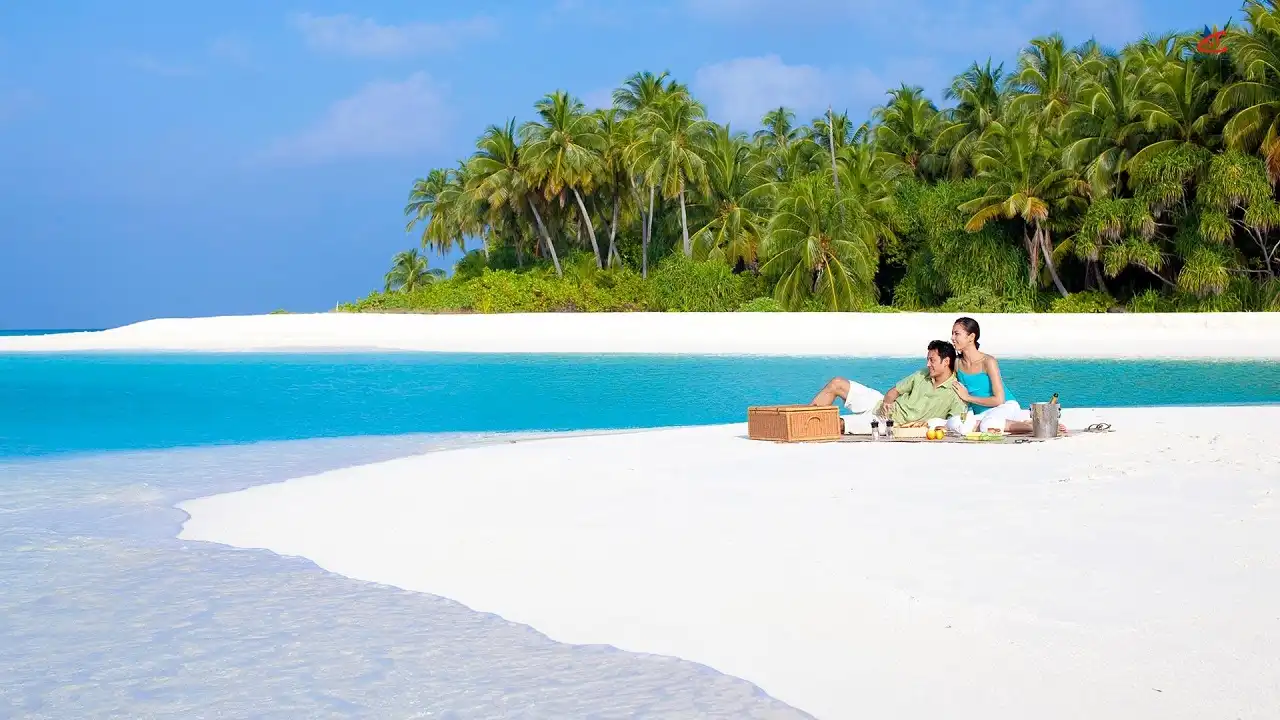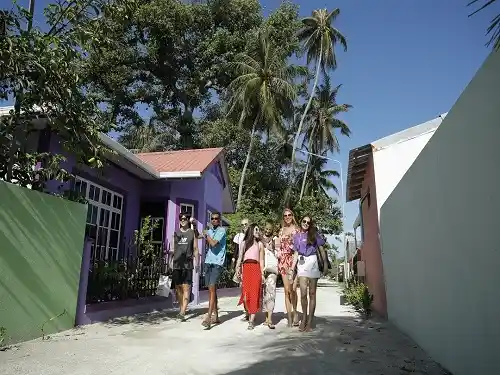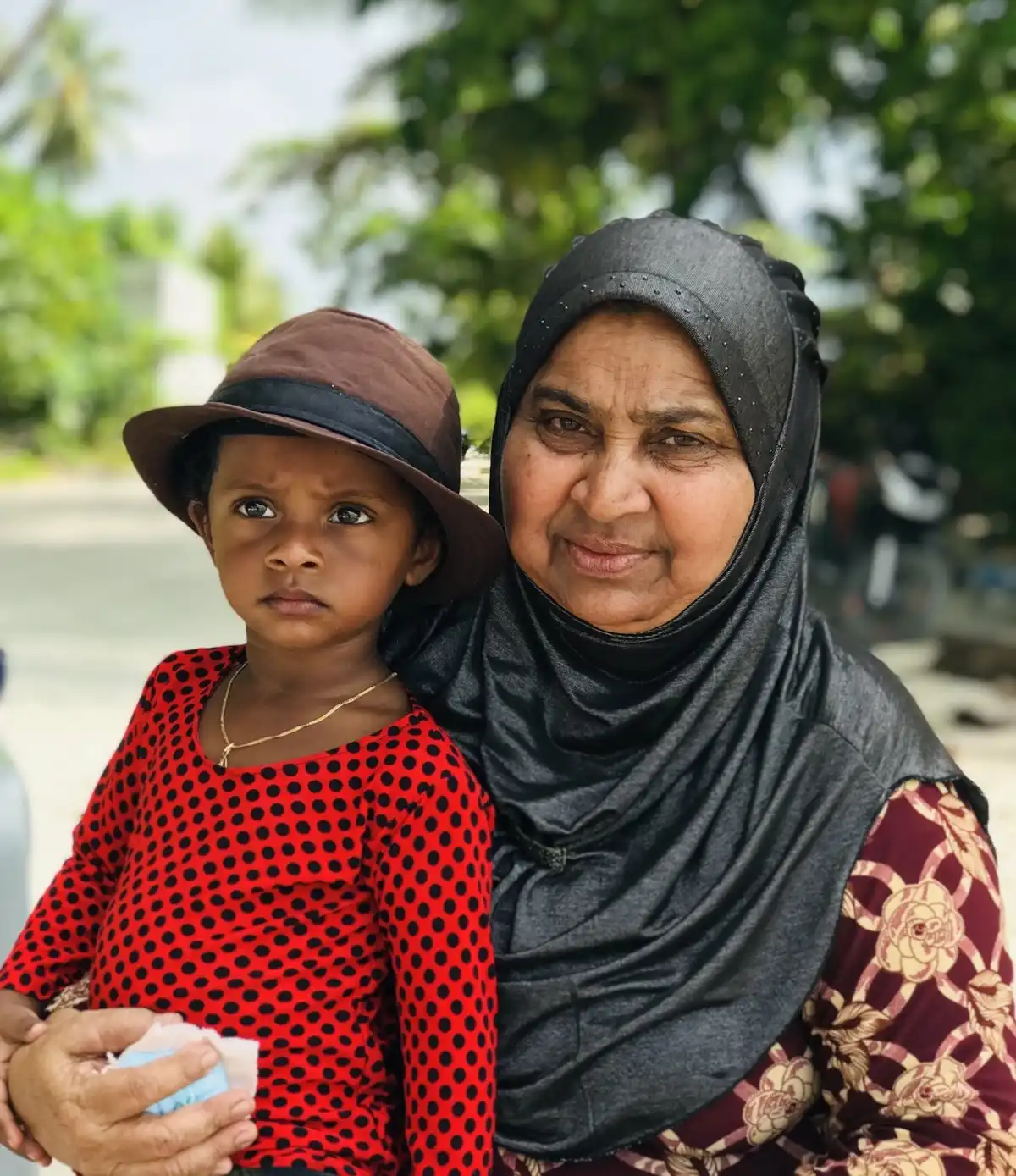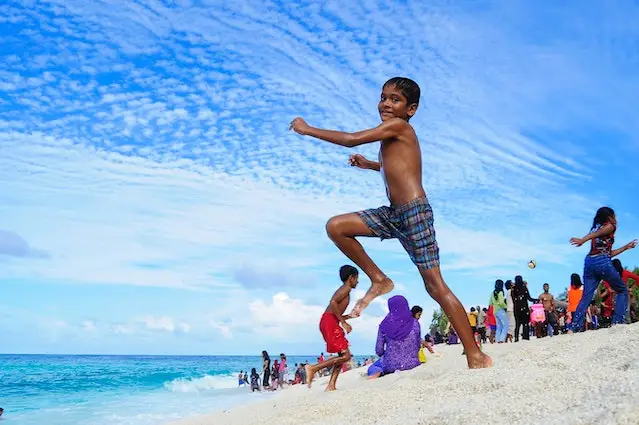Discover a secluded paradise with pristine beaches, crystal-clear lagoons, and authentic Maldivian culture in Baa Atoll's UNESCO Biosphere Reserve
Located in the stunning Baa Atoll, Fulhadhoo Island is a hidden gem that offers visitors an unspoiled paradise experience. This secluded island remains one of the most pristine and least developed inhabited islands in the UNESCO Biosphere Reserve, preserving its natural beauty and tranquil atmosphere.
What makes Fulhadhoo special is its remarkable isolation and untouched environment. With a small population of just around 250 residents, the island maintains a peaceful ambiance rarely found elsewhere. Fulhadhoo is renowned for having some of the most beautiful beaches in the Maldives, with powdery white sand stretching for hundreds of meters and crystal-clear turquoise waters that seem to glow under the tropical sun.
Visitors to Fulhadhoo are drawn by its extraordinary natural beauty, pristine beaches that often feel completely private, exceptional house reef for snorkeling, and the authentic glimpse into traditional Maldivian island life. The island's slower pace, minimal development, and genuine cultural experiences make it an ideal destination for travelers seeking to disconnect from the modern world and discover the authentic heart of the Maldives in its most natural state.
Fulhadhoo Island is situated in the southwestern part of Baa Atoll, approximately 130 kilometers northwest of Male. The island occupies a unique position within the UNESCO Biosphere Reserve, surrounded by crystal-clear waters, vibrant coral reefs, and several uninhabited islands.
Its relatively remote location, even within Baa Atoll, contributes to its unspoiled character and pristine environment. Fulhadhoo is separated from neighboring islands by deeper channels, creating a more secluded experience while still being accessible to travelers willing to make the journey to this paradise.
Fulhadhoo Island is renowned for its extraordinary natural beauty, with landscapes that embody the quintessential Maldivian paradise. The island's pristine environment and minimal development have preserved its natural features in an almost untouched state.

Fulhadhoo boasts some of the most beautiful beaches in the Maldives, with powdery white sand that stretches for hundreds of meters. The beaches are often completely empty, creating the feeling of having your own private paradise.

The island is surrounded by shallow, crystal-clear lagoons with water so transparent that boats appear to float on air. These natural swimming pools offer safe, calm waters perfect for relaxation and gentle swimming.

Fulhadhoo's house reef is exceptionally healthy, with diverse coral formations and abundant marine life. Snorkelers can access this underwater wonderland directly from the beach at several entry points around the island.

The interior of the island features dense tropical vegetation with towering palm trees, banyan trees, and native plants. This natural canopy provides welcome shade and creates a serene environment for peaceful walks.
Fulhadhoo's beaches are truly exceptional:
Many visitors consider Fulhadhoo's beaches to be among the most beautiful they've ever seen, rivaling those of exclusive resort islands but without the crowds.
Fulhadhoo benefits from strong environmental protection:
These conservation efforts help ensure that Fulhadhoo remains a pristine natural paradise for future generations to enjoy.
Fulhadhoo offers a limited but authentic range of accommodation options that focus on simplicity and genuine hospitality. While facilities are more basic than on more developed islands, the accommodations provide comfortable stays that allow visitors to connect deeply with the island's natural environment.

A handful of family-operated guesthouses offer simple but clean accommodations with a personal touch. These properties typically feature air-conditioned rooms with private bathrooms, home-cooked Maldivian meals, and direct access to local knowledge through the host families.
Price Range: $40-65 per night
Features: Authentic hospitality, home-cooked meals, cultural insights, excursion arrangements

For travelers seeking deep cultural immersion, homestay experiences are available with local families. These provide the most authentic glimpse into island life, with guests sharing meals and daily activities with their host family while enjoying basic but comfortable accommodation.
Price Range: $30-50 per night, including meals
Features: Cultural immersion, family interaction, traditional meals, daily island activities

A very small number of simple beach bungalows offer a more private experience with direct beach access. These modest accommodations provide a peaceful environment for those seeking a closer connection to nature while maintaining basic comforts.
Price Range: $60-85 per night
Features: Beach access, privacy, basic amenities, natural surroundings
Fulhadhoo offers basic facilities that meet essential visitor needs while maintaining its authentic island character. The infrastructure is minimal, reflecting the island's traditional lifestyle and limited development.
The island has a couple of small local shops providing basic necessities and snacks. These family-run convenience stores stock essential items for both locals and visitors, though selection is limited.
Most meals are provided by guesthouses featuring fresh seafood and traditional Maldivian cuisine. There are no standalone restaurants on the island, with dining experiences centered around home-cooked meals prepared by host families.
Fulhadhoo has a small health center with very basic medical services. For anything beyond minor issues, patients are transferred to Eydhafushi (atoll capital) or Male for treatment.
Mobile coverage is available from both Dhiraagu and Ooredoo networks, though signal strength may vary. Some guesthouses offer Wi-Fi, but connectivity is typically slower and less reliable than on more developed islands.
The island relies primarily on rainwater collection systems and groundwater. Most guesthouses provide filtered drinking water for guests, and bottled water is available in local shops.
Fulhadhoo has a central power plant providing electricity, though some areas may experience scheduled outages. Many accommodations have backup generators for essential services during power interruptions.
The island has a central mosque serving the local population. Visitors are welcome to view the exterior but should dress modestly and respect prayer times.
Fulhadhoo has a small harbor that serves fishing boats and visitor transfers. The harbor area is a hub of activity when boats arrive, though much quieter than on larger islands.
Fulhadhoo is blessed with some of the most spectacular beaches in the Maldives and a pristine marine environment. The island's location within the UNESCO Biosphere Reserve has helped preserve the surrounding reefs in excellent condition, making it a paradise for beach lovers and snorkeling enthusiasts.
Fulhadhoo's beaches are truly exceptional, with powdery white sand that stretches for hundreds of meters. The western beach is particularly impressive, extending for nearly a kilometer with sand so fine it feels like flour beneath your feet. The shallow, crystal-clear lagoons create a mesmerizing palette of blues that seem to shift with the changing light throughout the day.
The island has a designated "bikini beach" where tourists can wear Western-style swimwear. This beautiful stretch of sand provides a relaxing environment while respecting local cultural norms. The remaining beaches require modest dress as they are used by the local community.
Fulhadhoo's house reef is a highlight for snorkelers, with healthy coral formations and abundant marine life accessible directly from several points around the island. The reef features diverse coral species, colorful reef fish, and larger marine visitors like turtles and reef sharks. The exceptional water clarity, often exceeding 20-30 meters visibility, enhances the underwater experience.


The waters around Fulhadhoo Island offer exceptional marine biodiversity, making it a paradise for underwater enthusiasts:
The island's remote location and limited development have helped preserve Fulhadhoo's marine environment in exceptional condition.
Fulhadhoo offers a range of activities that focus on natural beauty and cultural immersion. The island's pristine environment provides the perfect backdrop for relaxation and exploration in a tranquil setting.








Fulhadhoo is home to a small, close-knit community of approximately 250 residents who maintain strong traditional values and a lifestyle deeply connected to the natural environment. The island's population is known for its warm hospitality, fishing expertise, and preservation of authentic Maldivian culture.
Daily life on Fulhadhoo follows the rhythm of traditional island routines, centered around fishing, prayer times, and community gatherings. Mornings begin early as fishing boats depart before dawn, returning mid-morning with their catch. The island awakens with the call to prayer, followed by a day of work, family responsibilities, and community interactions. Evenings often find residents gathering in public spaces, sharing news, and socializing as the day cools.
Fulhadhoo preserves many traditional Maldivian customs and cultural practices that have faded on more developed islands. Religious observances play an important role in community life, with festivals like Eid celebrated enthusiastically. Cultural expressions such as Boduberu performances remain vibrant, while traditional crafts including lacquer work, mat weaving, and boat building are still practiced by skilled artisans.
What makes Fulhadhoo's community special is its strong sense of unity and mutual support. With such a small population, island residents work cooperatively on community projects, share resources, and maintain close social bonds. This communal approach to life creates a warm atmosphere where visitors are genuinely welcomed and quickly made to feel part of the island's extended family rather than just tourists passing through.


Hear what previous visitors have to say about their stay on Fulhadhoo Island:
Fulhadhoo was the highlight of my travels through the Maldives and possibly the most beautiful place I've ever visited. The beaches are absolutely stunning - powder-white sand that stretches for what seems like forever, and the most incredible shades of blue water I've ever seen. What makes it special is how untouched and peaceful it feels. I often had entire beaches completely to myself, which is an incredible luxury in today's world. My guesthouse was simple but comfortable, run by a wonderful family who made me feel like part of their household. The food was amazing - fresh fish caught that morning prepared with local spices and vegetables. Snorkeling right off the beach was spectacular, with healthy coral and so many fish species. I saw turtles, reef sharks, and rays just a short swim from shore. The island's small community was incredibly welcoming, with children eager to practice English and adults happy to share their way of life. There's a profound sense of tranquility here that's becoming increasingly rare. If you're looking for nightlife or luxury amenities, this isn't the place. But if you want to experience the natural beauty of the Maldives and authentic island culture without the resort price tag, Fulhadhoo is absolute paradise.
I spent five days on Fulhadhoo and wish it could have been longer. The journey there was part of the adventure - a domestic flight followed by a speedboat ride - but absolutely worth it. This island feels like a secret that hasn't been discovered yet. The beaches are simply unbelievable, with sand so fine it squeaks under your feet and water in every shade of blue imaginable. I stayed in a small guesthouse run by a local family who couldn't have been more hospitable. They arranged snorkeling trips, fishing excursions, and even a visit to a nearby sandbank that was like something from a dream. The snorkeling was incredible - I saw more marine life here than at some famous dive sites elsewhere in the world. The coral was healthy and colorful, with turtles, reef sharks, and countless tropical fish. What I appreciated most was the authentic experience of island life. With only about 250 residents, you quickly feel connected to the community. I was invited to join a traditional Boduberu music performance one evening, which was a highlight of my trip. The pace of life here is wonderfully slow, allowing you to truly disconnect and relax. There are no restaurants or bars, but the home-cooked Maldivian food was delicious and plentiful. For travelers seeking natural beauty, peace, and an authentic experience rather than luxury, Fulhadhoo is absolute perfection.
Discover the pristine beaches, crystal-clear waters, and authentic island life of Fulhadhoo. Book your stay today for an unforgettable escape to one of the Maldives' most beautiful hidden gems.
Plan Your TripFulhadhoo Island is accessible via several transportation options, though its more remote location makes the journey slightly more complex than to some other islands. The most economical route is by public ferry from Male, which operates twice a week (Monday and Thursday), departing at 8:30 AM and arriving at Fulhadhoo around 4:00 PM. The ferry journey takes approximately 7.5 hours and costs about $4-6 per person. For a faster option, you can take a speedboat directly from Male to Fulhadhoo, which takes about 3.5-4.5 hours and costs around $80-100 per person. The most convenient but expensive option is to take a domestic flight from Velana International Airport to Dharavandhoo Airport (approximately 30 minutes), followed by a speedboat to Fulhadhoo (around 45 minutes). This combined journey costs around $140-160 but cuts travel time significantly. Another option is to travel to Eydhafushi (the atoll capital) first, then arrange a local boat transfer to Fulhadhoo. Most guesthouses on Fulhadhoo can arrange transfers and will provide detailed information about the best options based on your arrival date and preferences. Due to the island's remote location, it's essential to plan transportation well in advance.
The best time to visit Fulhadhoo Island depends on your priorities. For beach activities and optimal weather conditions, the northeast monsoon season (November to April) brings dry, sunny weather with lower humidity and calmer seas. This period is ideal for beach relaxation, snorkeling, and island exploration, with January to March typically offering the most reliable weather conditions with minimal rainfall and gentle sea breezes. Water visibility for snorkeling is often exceptional during this time, frequently exceeding 20-30 meters. If you're specifically interested in manta ray and whale shark encounters at nearby Hanifaru Bay, plan your visit between May and November, with peak season being June to October when plankton concentrations attract these magnificent creatures. This coincides with the southwest monsoon season, which brings occasional rain showers and slightly rougher seas, though there are still many sunny days. For the best balance of good weather and marine life encounters, consider visiting during the transitional months of April-May or October-November when you might experience the benefits of both seasons. Water temperature remains warm (27-30°C/80-86°F) throughout the year, making Fulhadhoo a viable destination in any season depending on your preferences.
Fulhadhoo distinguishes itself from other local islands through several unique characteristics. First and foremost are its extraordinary beaches, which many visitors consider among the most beautiful in the entire Maldives, rivaling or exceeding those of luxury resorts. The western beach in particular stretches for nearly a kilometer with powder-fine white sand and crystal-clear waters in multiple shades of blue. Second is the island's remarkable seclusion and minimal development. With only about 250 residents and very limited tourism infrastructure, Fulhadhoo offers a level of tranquility and privacy that's increasingly rare, even on local islands. Visitors often report having entire beaches to themselves. Third is the island's pristine natural environment, with healthy coral reefs accessible directly from shore and minimal human impact on the surrounding marine ecosystem. Fourth is the authentic cultural experience - due to its small size and relative isolation, Fulhadhoo has preserved traditional Maldivian customs, lifestyle, and community bonds that have evolved or faded on more developed islands. Fifth is the island's location within the UNESCO Biosphere Reserve, providing access to exceptional marine biodiversity while benefiting from conservation measures. For travelers seeking natural beauty, peace, and authentic experiences rather than modern amenities or nightlife, Fulhadhoo represents one of the last opportunities to experience the Maldives in its most pristine and traditional form.
Visiting Fulhadhoo requires some special considerations due to its remote location and limited infrastructure. First, plan your transportation carefully, as public ferries only operate twice weekly and private transfers should be arranged well in advance. Second, pack essentials as shopping options are extremely limited - bring any medications, specific toiletries, sunscreen, insect repellent, and other personal necessities you might need. Third, bring sufficient cash as there are no ATMs on the island, and credit cards are rarely accepted. Fourth, prepare for limited connectivity - while mobile signals are available, internet access may be slow and intermittent, making Fulhadhoo perfect for a digital detox. Fifth, adjust your expectations regarding amenities - accommodations are clean and comfortable but basic, with limited hot water and potential power fluctuations. Sixth, respect the conservative local culture by dressing modestly in public areas and observing local customs. Seventh, be self-sufficient in terms of entertainment - bring books, games, or other offline activities as there are no organized entertainment venues. Eighth, consider bringing small gifts for your host family or local children, such as school supplies or practical items. Ninth, pack a good first aid kit as medical facilities are basic. Finally, embrace flexibility and patience - island time moves at a different pace, and weather conditions can affect planned activities. With the right preparation and mindset, these considerations become part of the authentic experience that makes Fulhadhoo so special.
Packing for Fulhadhoo requires thoughtful preparation due to the island's remote location and limited shopping options. Essential clothing items include lightweight, breathable fabrics suitable for tropical weather, modest attire for village areas (covering shoulders and knees), swimwear for designated beaches, a light rain jacket or umbrella (especially during the southwest monsoon), and a sun hat and sunglasses for protection. Beach and water essentials should include high-SPF sunscreen (reef-safe preferred), after-sun lotion, a beach towel, water shoes for reef walking, and snorkeling equipment if you have your own (though basic gear can be rented). Health and personal items should include any prescription medications (in original packaging), a comprehensive first aid kit, insect repellent, hand sanitizer, toiletries, and feminine hygiene products. Practical items to consider are a good flashlight or headlamp (essential for evening walks), a reusable water bottle, a dry bag for boat trips, a power bank for electronics, universal power adapters, and a small backpack for day excursions. Entertainment options like books, e-readers, downloaded movies/music, and card games are recommended as there are no entertainment venues. Consider bringing cash in US dollars (widely accepted) as there are no ATMs, and small gifts for hosts or local children such as school supplies. Finally, don't forget your camera to capture the island's extraordinary beauty, preferably with underwater capabilities or a waterproof case.